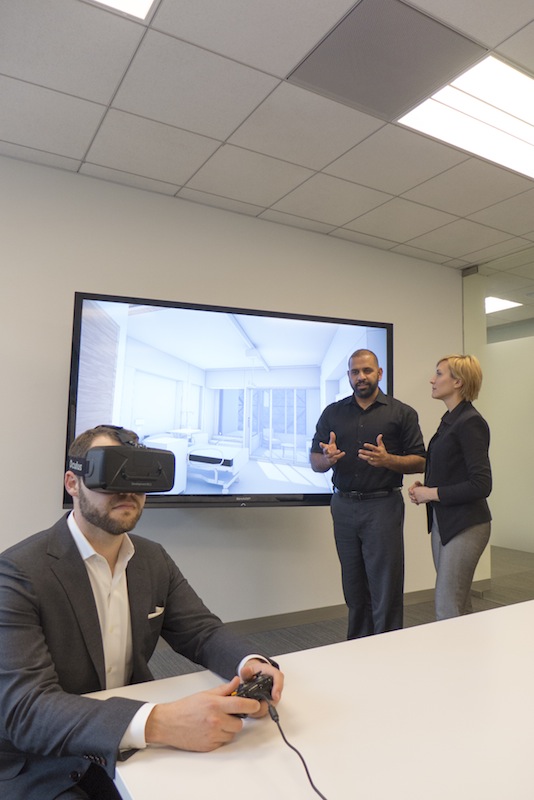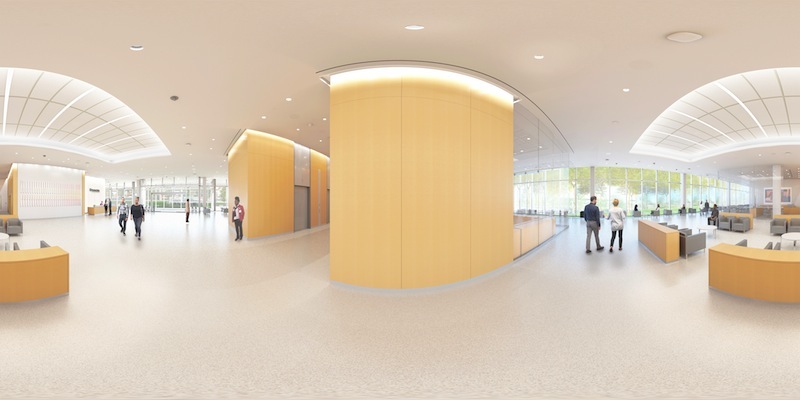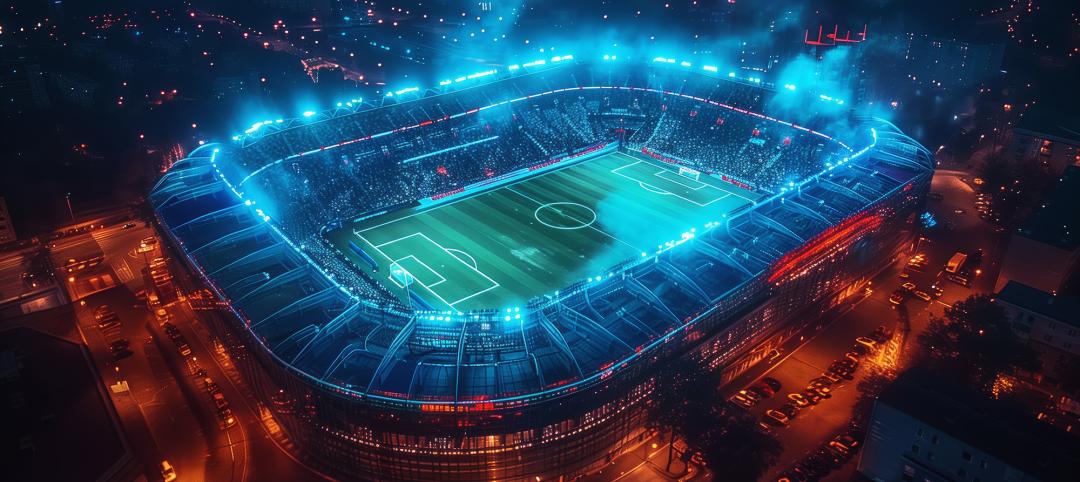About a year ago, Stantec began testing the compatibility of virtual reality technology with its various design platforms. It tested the number of hours and costs to implement VR, and how this tool could be used to present projects to clients.
It appears that this initial research has convinced Stantec about the utility of VR in project design. This month, Stantec launched Phase 2 of its virtual reality research initiative, which will explore methods for integrating VR technology with building design modeling.
Among the primary objectives, the initiative will include extended development of VR design testing as well as the creation of demonstrative VR showrooms in the firm’s San Francisco and Vancouver offices, alongside staff training modules. Stantec’s R&D Fund Program is providing financing for this research, the second phase of which is expected to wrap up sometime next year.
The firm is currently piloting VR at the revitalization of Vancouver’s Robson Square; at Ohio’s Cleveland Clinic Cancer Center; and at healthcare projects in Northern California and the State of Qatar. It has also purchased the equipment for the first two showrooms, which should be up and running by the winter, says Brendan Mullins, an architectural associate who is Stantec’s VR Research Lead.
This phase will include extensive software product testing to assess which evolving VR technologies best complement use in buildings design. And once the showrooms are tested, Stantec will produce a manual.
Conference rooms in the Vancouver and San Francisco offices will be fitted out with roll-away cabinets in which the equipment and wiring can be stored, so these spaces won’t look like showrooms when they aren’t being used as such.
Mullins tells BD+C that one of Stantec’s goals is to make these showrooms “as turnkey as possible,” so they can be installed in some of its other offices seamlessly. “We want to democratize VR, so that any architect can use it,” he says.

Several of Stantec's offices are already using Oculus Rifts in their design presentations to clients. The firm recognizes that some clients are still uncomfortable with this technology. Image: Stantec
Several of Stantec’s offices already use Oculus Rifts. But, Mullins notes, some clients are still reluctant or embarrassed about mounting the equipment on their heads. The showrooms, Stantec is hoping, would minimize client anxieties, especially if the equipment is as simple as a Google cardboard VR viewer, which Mullins says produces high levels of image fidelity.
Mullins says that Stantec doesn’t see VR as a substitute for modeling, but as an enhancement toward real-time design. He points, by way of example, to a healthcare client in the Middle East, where, he says, privacy is a primary concern. VR “allowed the client and our designers to see sightlines that we would have missed otherwise.”
Stantec is testing VR “to make all of the mistakes first, so our people don’t have to.” It also wants to provide its employees with best practices for software, marketing, and client presentation.
Related Stories
Sports and Recreational Facilities | Jul 15, 2024
Smart stadiums: The future of sports and entertainment venues
These digitally-enhanced and connected spaces are designed to revolutionize the fan experience, enhance safety, and optimize operational efficiency, according to SSR's Will Maxwell, Smart Building Consultant.
Virtual Reality | Jul 8, 2024
Can a VR-enabled AEC firm transform your project?
With the aid of virtual reality and three-dimensional visualization technologies, designers, consultants, and their clients can envision a place as though the project were in a later stage.
Healthcare Facilities | Jun 18, 2024
A healthcare simulation technology consultant can save time, money, and headaches
As the demand for skilled healthcare professionals continues to rise, healthcare simulation is playing an increasingly vital role in the skill development, compliance, and continuing education of the clinical workforce.
K-12 Schools | Apr 29, 2024
Tomorrow's classrooms: Designing schools for the digital age
In a world where technology’s rapid pace has reshaped how we live, work, and communicate, it should be no surprise that it’s also changing the PreK-12 education landscape.
University Buildings | Feb 21, 2024
University design to help meet the demand for health professionals
Virginia Commonwealth University is a Page client, and the Dean of the College of Health Professions took time to talk about a pressing healthcare industry need that schools—and architects—can help address.
AEC Tech | Jan 8, 2024
What's driving the surge of digital transformation in AEC today?
For centuries, the AEC industry has clung to traditional methods and legacy processes—seated patterns that have bred resistance to change. This has made the adoption of new technologies a slow and hesitant process.
Esports Arenas | Oct 10, 2023
Modular esports arena attracts more than gamers
As the esports market continues to grow to unprecedented numbers, more facilities are being developed by universities and real estate firms each year.
Virtual Reality | Jun 16, 2023
Can a VR-enabled AEC Firm transform building projects?
With the aid of virtual reality and 3D visualization technologies, designers, consultants, and their clients can envision a place as though the project were in a later stage.
Office Buildings | Jun 5, 2023
Office design in the era of Gen Z, AI, and the metaverse
HOK workplace and interior design experts Kay Sargent and Tom Polucci share how the hybrid office is evolving in the era of artificial intelligence, Gen Z, and the metaverse.
AEC Tech | May 9, 2023
4 insights on building product manufacturers getting ‘smart’
Overall, half of building product manufacturers plan to invest in one or more areas of technology in the next three years.

















